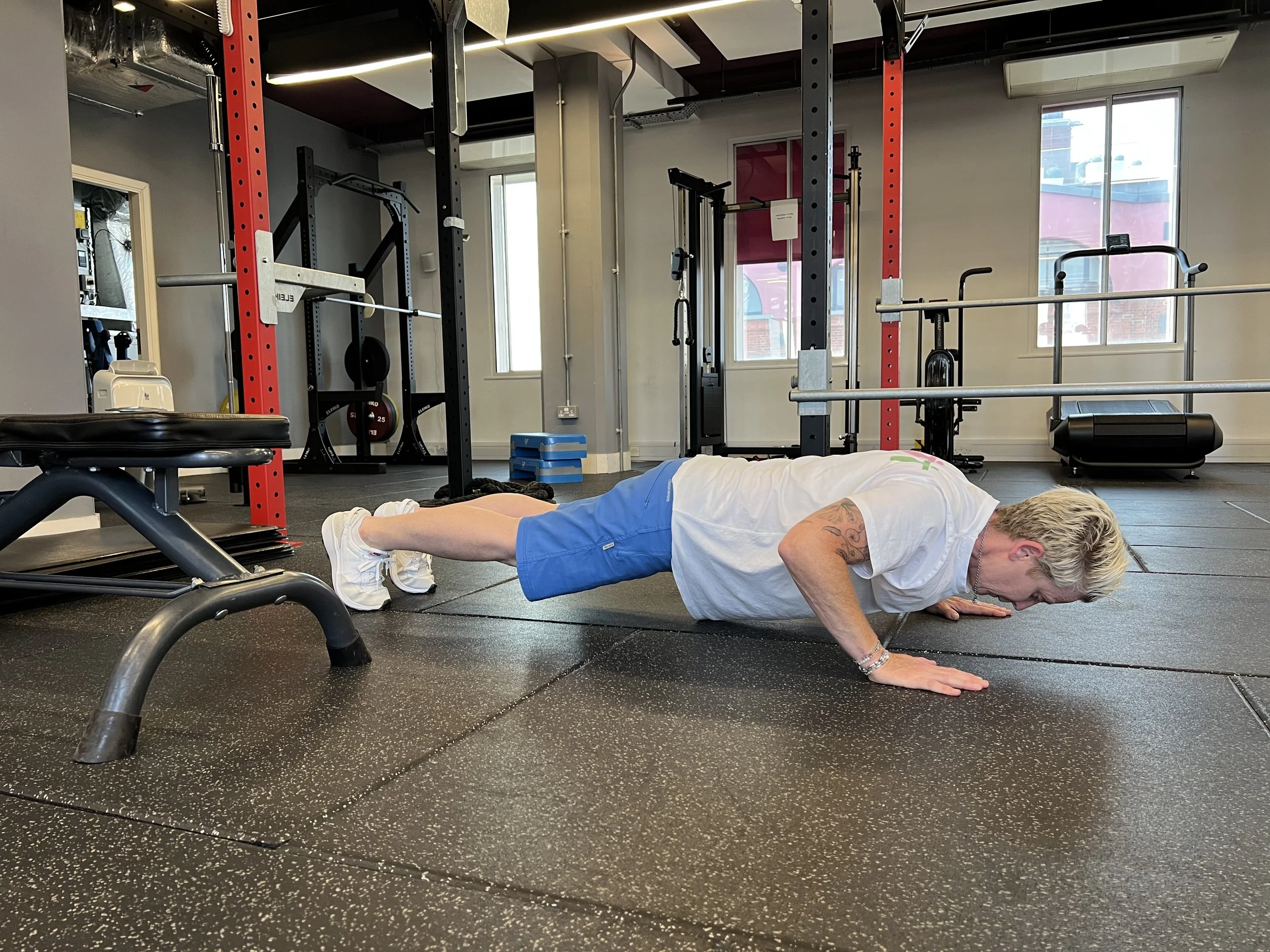want to learn to press up?
Why do so many of us struggle to press-up? Is it form, muscle strength, injury or weakness in certain areas of our body? It could be all or any of these. But don’t despair, there are great ways to learn and achieve this mighty exercise and here are some tips.
our incredible bodies
The press-up involves multiple muscles. The target muscle is the chest or ‘Pectoralis Major’. Then you have the synergists (muscles assisting the chest to create the movement) – these are the shoulder muscles. Then there are the biceps (front of the upper arm) and lastly we have the stabilisers (these stabilise the joint so movement can occur in another joint). For the press-up these would be the abdominal muscles (stomach muscles), spinal erectors (muscles that run vertically down your entire back on either side of your spine), hip muscles (mainly Psoas Major) and the quad muscles (the ones at the front of the thigh). Before we even start with the how, let’s just read this paragraph again and notice how amazing the body is and how much movement is involved in this particular exercise. ‘WOW!’
This exercise is also known as a compound movement (exercises that work multiple muscle groups at the same time). [watch this space for the next blog on compound movements].
why you should skip the ‘knee drop’ push-ups
Many of us drop to our knees when unable to do a full press-up and through experience, I understand why this would be a choice, e.g.:
unable to perform a full press up;
in a fitness class scenario there aren’t always the options to try another way;
satisfaction, feeling you can achieve getting your chest to the ground.
But when performing a press up this way, you’re not training your glutes or core correctly and you are taking the abdominals and legs out of the equation.
if your goal is to learn and perform a full press-up and, in my opinion, it should be, here are some great tips
A good starting point is using a wall. Your positioning will be the same for every bodyweight press-up, neutral spine, core engaged and feet together (they don’t need to touch just keep legs parallel). Hands stacked below the shoulders.
Keeping you head in a neutral position with eyes facing straight ahead, slowly lower yourself towards the wall in a high plank position, squeeze your glutes (bum) and core (stomach muscles) tightly, creating a straight line from your shoulders to your feet, allowing your arms to bend, keeping them close to the body and then slowly push yourself back up.
stage 1: start against a wall
Always have a goal and your goal here is to perform at least 10-12 comfortably. Once you’re able to do this you can then move onto a lower structure, for example, the kitchen sides or a couch.
If in the gym, you have so many choices, the removable bars on our rig is a great way to learn as you can position them at different heights until you eventually reach the ground. You can also perform incline press-ups on a bench which are readily available in the gym.
stage 2(a): push up supported by gym rail
stage 2(b): push up supported by a bench
The purpose for starting at a higher position is to lessen the load. However, performing in the correct position will allow for all the muscles involved in the press-up to be working and doing their job.
the final product
As our trainers are readily available to assist you on your fitness journey, please feel free to ask for advice on any exercise you might be working on to make sure you’re doing the exercise correctly to get the most out of it.
We’re here in the gym to help! Let’s get pressing!

